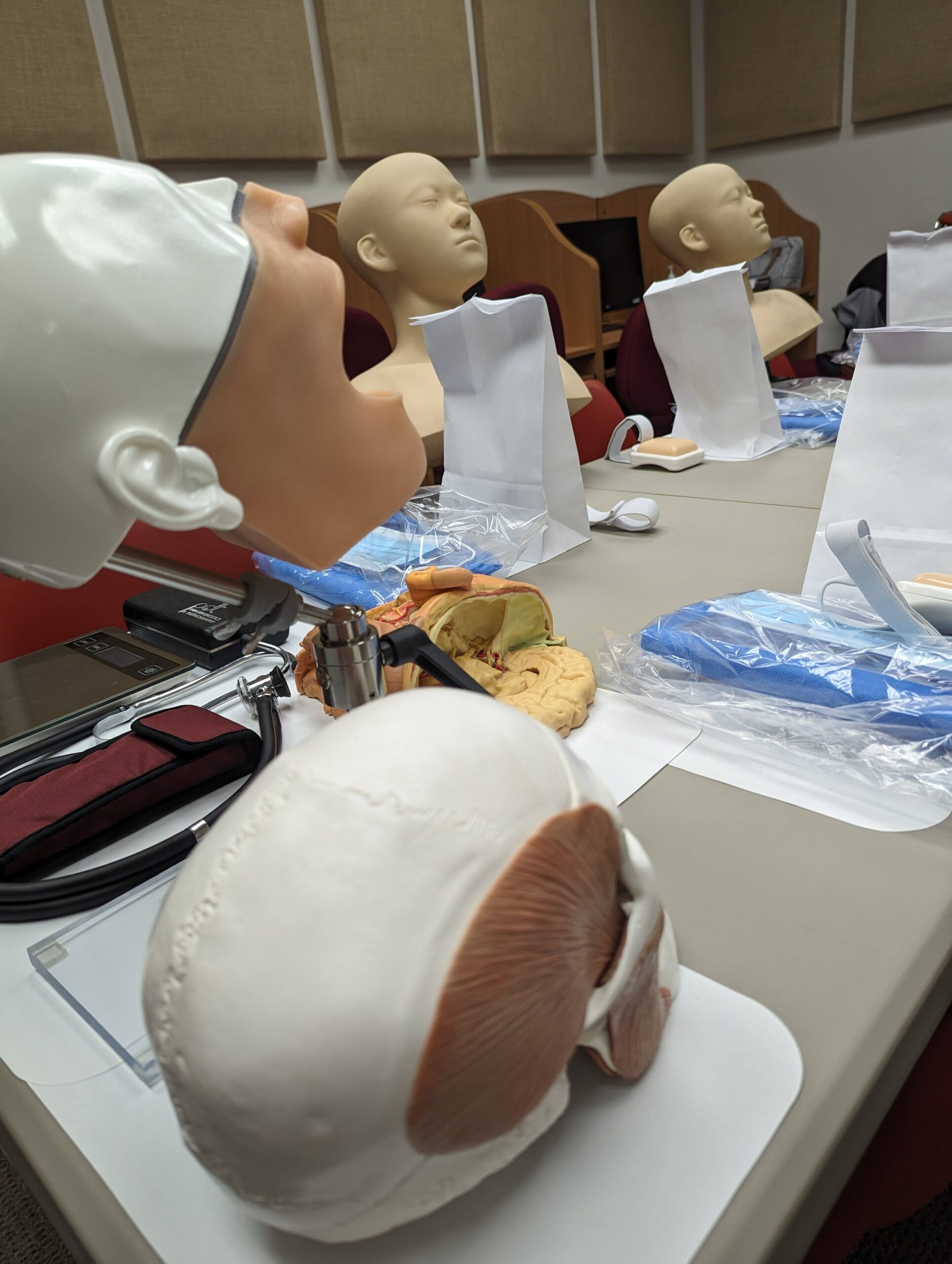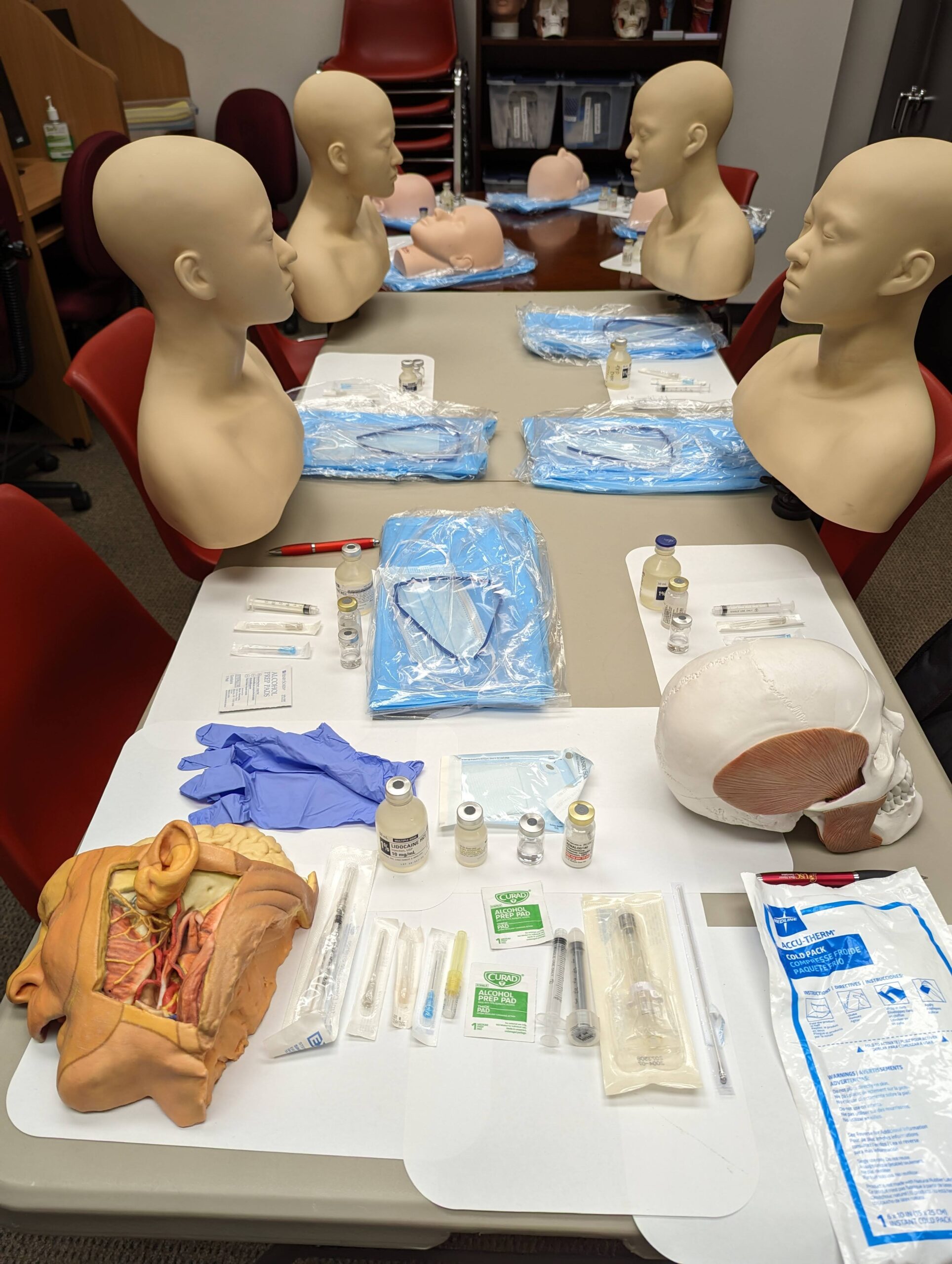Artificial Intelligence (AI) is rapidly transforming various fields, and orofacial pain and oral medicine is no exception. This blog explores how AI is enhancing diagnostic accuracy, patient care, and the overall practice of dental medicine.
Artificial Intelligence (AI) is rapidly transforming various fields, and orofacial pain and oral medicine is no exception. This blog explores how AI is enhancing diagnostic accuracy, patient care, and the overall practice of dental medicine.
Understanding Orofacial Pain and Oral Medicine
Orofacial pain (OFP) and oral medicine encompass numerous conditions and challenges. OFP focuses on diagnosing, managing, and treating pain disorders related to the jaw, mouth, face, and associated regions. In 2020, it was recognized as the 12th dental specialty, underscoring its significance in expanding patient care.
Oral medicine addresses the oral health care of medically complex patients, diagnosing and managing disorders affecting the oral and maxillofacial region. This specialty includes over 200 diagnoses, such as oral mucosal abnormalities, salivary gland disorders, taste and smell disorders, and temporomandibular disorders (TMD).
Challenges in Orofacial Pain and Oral Medicine
- The field faces several challenges:
- Complex Diagnoses: More than 100 diagnoses must be considered for orofacial pain problems, and over 200 for oral mucosal, infectious, or osseous diseases.
- Prevalence: The combined prevalence of orofacial pain and oral medicine disorders is 30-40% in the general population.
- Lack of Biomarkers: Most conditions lack defined biomarkers, complicating diagnosis.
- Subjectivity: Conditions often present significant subjective symptoms, complicating the diagnostic process.
- Data Issues: Semi-structured narrative notes often miss critical data points for accurate diagnosis, making text mining challenging.
Traditional vs. Precision Medicine
The traditional method of medical decision-making is hypothesis-driven, relying on initial observations and selectively gathered information. However, this method has limitations, especially with the advent of big data and precision medicine and the integration of AI (Figure 1).
Precision medicine aims to provide targeted, personalized care using big data. It involves:
- Targeted Diagnostics: Utilizing genetic and molecular information, clinical phenotypes, environment, and lifestyle to predict the most effective treatments for individual patients.
- Hypothesis-Generating Approach: Employing big data analysis to generate hypotheses, which are then tested and refined.

Figure 1. Timeline of the decision making process in medicine from the traditional method to Precision medicine with the integration of AI.
The Role of AI in Precision Medicine
AI, particularly machine learning (ML), is critical to precision medicine. ML algorithms enable systems to identify patterns, make decisions, and improve through experience. In the context of orofacial pain and oral medicine, AI aids in:
- Diagnostics: Enhancing diagnostic accuracy by analyzing vast datasets, identifying key clinical features, and suggesting differential diagnoses.
- Treatment: Selecting the most effective treatment options, reducing side effects, and improving patient outcomes.
- Prevention: Early detection of at-risk patients and enhancing preventive measures through personalized approaches.
What is Artificial Intelligence (AI)?
AI refers to the general ability of computers to emulate human thought and perform tasks in real-world environments. In medicine and dentistry, AI starts with the knowledge of experienced practitioners. Entering information from patients’ files allows AI to generate algorithms that mimic commonsense decision-making. These algorithms help new practitioners acquire the vast amounts of data needed to treat patients effectively.
Components of AI
AI involves several important methods, including:
- Machine Learning (ML): When a data-trained computer system can “learn” or modify its algorithms when given new information.
- Deep Learning (DL): A more advanced subset of ML, using multiple layers of data and algorithms, similar to a human brain’s nervous system. Neural networks in the software can process several types of data simultaneously, incorporating all available data.
Where do we see generative AI?
The most prevalent example of generative AI today is ChatGPT. This software has been trained to follow an instruction in a prompt and provide a detailed response. ChatGPT and other “chatbots” are widely used, from electronic medical records to customer service calls, social media apps, messaging platforms, and websites. In dentistry, ChatGPT can be a resource for patients seeking information about third molar extraction. However, AI-generated advice is only as good as the data it uses.
Medical and Dental AI
AI has been used longer in medicine than in dentistry due to the wider availability of data. In dentistry, many sources of information are isolated. The prevalent dental practice model—a mix of private solo or group practices, corporate offices, and dental schools or research facilities—makes it challenging to obtain the large databases needed to train AI applications. The largest application of AI has been in radiology, which has parallels between medicine and dentistry. Digital data collection and image recognition can inform AI algorithms, improving the speed and accuracy of image interpretation and diagnosis (Figure 2).

Figure 2. Different applications of AI in healthcare system.
AI and Electronic Health Records (EHR)
AI’s integration with EHR systems is crucial in modern healthcare. EHR systems store structured (quantitative) and unstructured (qualitative) data. AI helps in:
- Data Standardization: Converting heterogeneous data into curated, homogeneous data that is easy to use and interpret.
- Clinical Decision Support: Providing real-time assistance to clinicians during patient encounters, reducing diagnostic errors and improving accuracy.
AI and Orofacial Pain
In orofacial pain, radiologic applications in the diagnosis and treatment of temporomandibular joint (TMJ) diseases, muscle disorders, and referred pain are significant beneficiaries of radiologic AI. Other potential AI applications include diagnostics, patient management, head and neck cancer, restorative and prosthodontic dentistry, orthodontics, periodontics, and radiology. Careful development could make AI a reliable tool to augment dental care, making it more accurate, efficient, and economical.
AI-Integrated Electronic Medical Records
Dr. Vistoso et al. are developing an AI-integrated electronic medical record (EMR) to help diagnose over 100 orofacial pain diagnoses found in the first edition of the International Classification of Orofacial Pain (ICOP), plus additional diagnoses for non-pain TMJ symptoms. With an average practitioner’s experience of 700 patients per year, it would take several years to collect enough data to build a sufficient database for AI diagnostic algorithms. Compared with radiologic interpretation, AI applications in decision-making around orofacial pain are complex due to the large number of subjective and narrative components of the clinical features and disease-defining variables.
Concerns About AI
There remain misgivings about AI in society, from potential job loss to fears of systems inheriting biases or even taking over mankind. These concerns are primarily directed toward generative AI, which can create new content, like conversations, stories, images, videos, and music. Generative AI typically is “trained” on large, Internet-based data sources.
Future Directions and Potential Benefits of AI
AI offers numerous future benefits:
- Clinical Decision Support Systems (CDSS): Integrating AI with CDSS to improve decision-making and accuracy.
- Data-Based Phenotypes: Gathering accurate data for ML to generate clinical and computational phenotypes.
- Improved Algorithms: Developing new AI algorithms for better diagnosis prediction and treatment effectiveness.
Conclusion
In the future, AI deep learning algorithms will play a significant role in diagnosis and treatment. Proponents anticipate that AI will facilitate correct diagnoses and treatment, avoiding misdiagnosis and harmful, irreversible treatments. Providers will still need to apply their knowledge and experience, as the TMJ is one of the most complex systems in the body. AI will serve as a decision support tool. Inexperienced providers need to recognize their limitations, understand when something isn’t working, and refer patients to an orofacial pain specialist when necessary. Higher quality research and more data are needed to make AI applications useful in clinical practice. Presently, the risk of bias is high, and the certainty of evidence is low.
AI’s impact on orofacial pain and oral medicine is promising, with the potential to significantly enhance diagnostic accuracy, patient care, and the overall practice of dental medicine.
References
- Liu PR, Lu L, Zhang JY, Huo TT, Liu SX, Ye ZW. Application of Artificial Intelligence in Medicine: An Overview. Curr Med Sci. 2021 Dec;41(6):1105-1115. doi: 10.1007/s11596-021-2474-3. Epub 2021 Dec 6. PMID: 34874486; PMCID: PMC8648557.
- Beavers, Anthony (2013). “Alan Turing: Mathematical Mechanist”. In Cooper, S. Barry; van Leeuwen, Jan (eds.). Alan Turing: His Work and Impact. Waltham: Elsevier. pp. 481–485. ISBN 978-0-12-386980-7.
- Shasha, Dennis; Lazere, Cathy (1998). Out of Their Minds: The Lives and Discoveries of 15 Great Computer Scientists. Springer. pp. 22-37. ISBN 9780387982694
- Beatrice Nolan. These are the 3 biggest fears about AI — and here’s how worried you should be about them. Business Insider. (Businessinsider.com). Nov 3, 2023
- Aguiar de Sousa R, Costa SM, Almeida Figueiredo PH, Camargos CR, Ribeiro BC, Alves E Silva MRM. Is ChatGPT a reliable source of scientific information regarding third-molar surgery? J Am Dent Assoc. 2024 Mar;155(3):227-232.e6. doi: 10.1016/j.adaj.2023.11.004. Epub 2024 Jan 8. PMID: 38206257.
- Mintz Y, Brodie R. Introduction to artificial intelligence in medicine. Minim Invasive Ther Allied Technol. 2019 Apr;28(2):73-81. doi: 10.1080/13645706.2019.1575882. Epub 2019 Feb 27. PMID: 30810430.
- Ahmed N, Abbasi MS, Zuberi F, Qamar W, Halim MSB, Maqsood A, Alam MK. Artificial Intelligence Techniques: Analysis, Application, and Outcome in Dentistry-A Systematic Review. Biomed Res Int. 2021 Jun 22;2021:9751564. doi: 10.1155/2021/9751564. PMID: 34258283; PMCID: PMC8245240.
- Paulina Vistoso Monreal A, Veas N, Clark G. An artificially intelligent (or algorithm-enhanced) electronic medical record in orofacial pain. Jpn Dent Sci Rev. 2021 Nov;57:242-249. doi: 10.1016/j.jdsr.2021.11.001. Epub 2021 Nov 20. PMID: 34849180; PMCID: PMC8608603.
- Ozsari S, Güzel MS, Yılmaz D, Kamburoğlu K. A Comprehensive Review of Artificial Intelligence Based Algorithms Regarding Temporomandibular Joint Related Diseases. Diagnostics (Basel). 2023 Aug 18;13(16):2700. doi: 10.3390/diagnostics13162700. PMID: 37627959; PMCID: PMC10453523.
- Jha N, Lee KS, Kim YJ. Diagnosis of temporomandibular disorders using artificial intelligence technologies: A systematic review and meta-analysis. PLoS One. 2022 Aug 18;17(8):e0272715. doi: 10.1371/journal.pone.0272715. PMID: 35980894; PMCID: PMC9387829.
- Kreiner M, Viloria J. A novel artificial neural network for the diagnosis of orofacial pain and temporomandibular disorders. J Oral Rehabil. 2022 Sep;49(9):884-889. doi: 10.1111/joor.13350. Epub 2022 Jun 30. PMID: 35722743.
- Talaat WM, Shetty S, Al Bayatti S, Talaat S, Mourad L, Shetty S, Kaboudan A. An artificial intelligence model for the radiographic diagnosis of osteoarthritis of the temporomandibular joint. Sci Rep. 2023 Sep 25;13(1):15972. doi: 10.1038/s41598-023-43277-6. PMID: 37749161; PMCID: PMC10519983.
- Almășan O, Leucuța DC, Hedeșiu M, Mureșanu S, Popa ȘL. Temporomandibular Joint Osteoarthritis Diagnosis Employing Artificial Intelligence: Systematic Review and Meta-Analysis. J Clin Med. 2023 Jan 25;12(3):942. doi: 10.3390/jcm12030942. PMID: 36769590; PMCID: PMC9918072.





